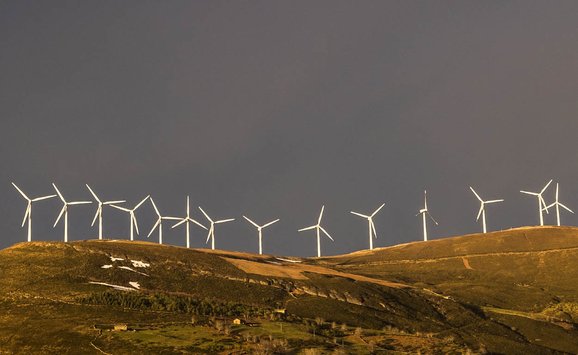Now, some fifteen years after America recognized the need for governmental regulation to ensure environmental quality, it is entirely fitting that we pause to examine where we have come and where we are going.
The Congressional response to heightened public sensitivity to environmental problems popularized by accounts like Rachel Carson's Silent Spring resulted in a spate of federal laws in the 1970s, continuing into the early 1980s, with concomitant agency-implementing regulations and, inevitably, litigation. Following the pattern set by the civil rights revolution, the first decade of environmentalism was marked by frequent confrontation, definition of major issues, and responsive legislation.
The decade of the '80s, like the '70s for civil rights, in contrast offers an opportunity for fine tuning. That maintaining environmental quality and protecting natural resources are a necessary part of society's doing business now are reasonably well accepted and these values have been integrated at all levels of societal decision making. This heightened sensitivity has resulted at best in a cleaner environment; at worst it has arrested what otherwise would have been an accelerated rate of deterioration of the nation's air, water, and land resources.
As environmental regulators turned from the obvious to the not-so-obvious, from reclaiming rivers so polluted they caught fire to regulating exposure to minute amounts of toxic chemicals because of future adverse health effects, the tenor of criticism has changed. Some critics of the '70s claimed that environmental regulation is either not necessary at all or frequently not cost effective and that it may be based on scientifically inaccurate, or at least exaggerated, information. Now it is more fashionable to argue that pervasive government regulation constitutes an intrusion on the private sector which—given a chance—is able to do the job better. Some even charge that environmental regulation intrudes on personal freedoms. Viewed in retrospect, some of these criticisms are true. So where do we go from here?
Economics and enforcement
Congress' current difficulty in reauthorizing many, if not most, of the nation's major environmental statutes underscores increasing national debate about not only the future of environmentalism, but also of government regulation in general. Whatever the ultimate worth of benefit-cost analysis in determining the substance of regulations, there is now consensus that, done conscientiously, such analysis at least is useful in setting regulatory priorities. Some are coming to the position that it should be used more broadly to determine how and when to regulate, as well as to decide what problems are amenable to governmental regulation at all.
Economics is a two-edged sword. First it was used against environmentalists in economic blackmail—jobs versus cleanup. Now environmentalists often use the economics sword to encourage environmental cleanup and preservation of natural resources. Governmental subsidies for agricultural programs that result in incentives to farm highly erodible lands or to drain wetlands to grow crops already in surplus now are opposed on economic as well as environmental grounds. The same is true for environmentally ruinous water projects whose costs to taxpayers spiral because their beneficiaries pay no user fees or share no costs. Increasingly, those concerned about the environment argue in economic terms for internalizing economic and environmental costs or for eliminating subsidies altogether, including tax breaks, or both. Together with this approach goes experimentation on economic incentives to promote cleanup and resource preservation, such as EPA's offset and bubble policies for air pollution, to replace or supplement simple command-and-control regulations that are difficult to enforce locally.
Virtually all of the major federal environmental statutes envisage ultimate federal delegation of implementation and enforcement. Given thinly stretched government resources at the state and local levels, as well as growing scientific complexity of the problems being dealt with, the need already is clear for cooperation between regulators and regulated on acquiring basic data and developing Preferred cleanup mechanisms. The argument that containing and eliminating pollution is good for business now is more accepted by American industry, as is the fact that industries must be honestly concerned with being corporate good citizens and not just write off pollution as an inevitable by-product of economic growth. One result is a growing amount of cooperation between environmentalists and industry to solve, or at least mitigate, such problems as hazardous waste disposal. where total reliance on government has proved to be inadequate.
Global threats
Certainly the most difficult problems facing environmentalists as we move into the post-industrial age are international. Ultimately they are the most significant, but they also are the least receptive to quick fixes and resist such traditional tools as technology-forcing regulation. Some examples:
- Nuclear war, and the subsequent pall of a nuclear winter.
- Burgeoning population growth, particularly in developing countries where orderly food and natural resource development are unable to keep pace with demand.
- The destruction of tropical rainforests and its effects on the upper atmosphere, climate, and, eventually, sea level, and on species diversity: a fertile source of scientific information may well be sacrificed because of the human species' inability to limit its fecundity.
- Acid rain, whose solution ultimately requires a much more efficient use of energy and greater use of renewable energy sources as opposed to fossil fuel.
International problems will demand much attention from environmentalists, who will be without perhaps their most useful weapon. The traditional approach of national regulation, at least without international reciprocation, is unlikely to reduce many global threats.
As one looks at the future of U.S. environmental regulation, one can see a number of imperatives. For example, Americans are likely to have a greater interest in recreation as machines take over for human labor, and this implies a greater need to protect land systems, water supply and quality, and wildlife habitat. But not all activity will be out of doors: we also must focus attention on workplace and indoor air pollution. These and other issues are all complex variations of the variations of the more simple environmental themes dealt with in the 1970s, but it seems to me they suggest at least two new approaches. The first is a government foresight capability to do the sort of planning required. And second, society must recognize that the quality of life of future generations depends on investments made by the current generation, and that these are likely to require more imaginative solutions than merely pages of command-and-control regulations in the Federal Register.
The challenge remains as great and the environmental problems even more critical. The methods and scope of environmental problem solving must change to meet the challenge.

William A. Butler is vice president for government relations and counsel of the National Audubon Society and heads Audubon's Capital Office in Washington, D.C.





